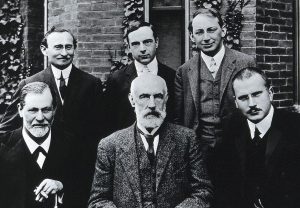 The relationship between Carl Gustav Jung and Sigmund Freud had a profound impact on the development of both their respective theories and the field of psychology as a whole. Their relationship began when Jung read Freud’s “The Interpretation of Dreams” in 1900, which greatly influenced his own work on dreams and the unconscious (Bair, 2003). In 1906, Jung published a study on word associations, which Freud appreciated and saw as evidence supporting his own ideas about the unconscious (Shamdasani, 2018).
The relationship between Carl Gustav Jung and Sigmund Freud had a profound impact on the development of both their respective theories and the field of psychology as a whole. Their relationship began when Jung read Freud’s “The Interpretation of Dreams” in 1900, which greatly influenced his own work on dreams and the unconscious (Bair, 2003). In 1906, Jung published a study on word associations, which Freud appreciated and saw as evidence supporting his own ideas about the unconscious (Shamdasani, 2018).
Their collaboration began in earnest in 1907, after their first meeting in Vienna. During this time, they shared many ideas, including the importance of the unconscious mind in shaping human behavior. Jung was considered Freud’s most promising protégé and was even referred to as the “crown prince” of psychoanalysis (Bair, 2003). Freud hoped that Jung would continue his work and ensure the growth and development of psychoanalysis.
However, their relationship was not without its tensions. As they collaborated, several key differences in their theoretical perspectives became more pronounced. One major point of disagreement was the role of sexuality in human development. Freud believed that sexual drives were the primary motivating forces behind human behavior and psychological development, while Jung argued that sexuality was just one of many factors influencing the psyche (Storr, 2013).
Another significant divergence in their views was the nature of the unconscious. Freud focused on the personal unconscious, which was connected to an individual’s repressed desires, traumas, and memories. Jung, on the other hand, posited the existence of a deeper, collective unconscious that contained universal symbols and archetypes shared by all humans (Jung, 1959).
Their differences came to a head during a series of lectures in the United States in 1909, where their disagreements were apparent to those in attendance (Bair, 2003). The final break between Freud and Jung occurred in 1913, after the publication of Jung’s book “Symbols of Transformation,” which presented ideas that fundamentally diverged from Freud’s theories (Storr, 2013).
The split between Freud and Jung marked the beginning of two distinct schools of thought within psychology: Freud’s psychoanalysis and Jung’s analytical psychology. Despite their differences, the influence of Freud on Jung’s work is undeniable, as it laid the foundation for many of Jung’s ideas and served as a catalyst for him to develop his own unique approach to the study of the human psyche (Shamdasani, 2018).
(In the picture: Sigmund Freud, Stanley Hall, Carl Gustav Jung, Abraham Arden Brill, Ernest Jones and Sándor Ferenczi. Photograph, 1909.)